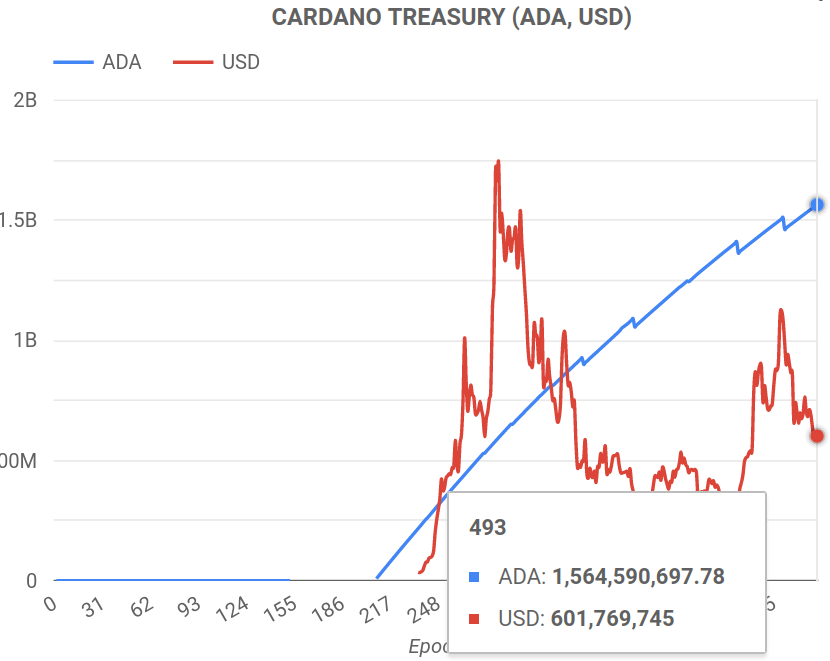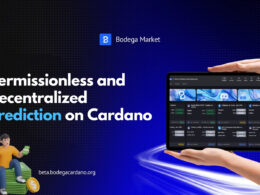I saw this article from Decrypt the other day ‘Wall Street Is Greedy’: Tether Co-Founder Predicts Next ETFs After Bitcoin, Ethereum, which inspired me to write this article. Tether co-founder and venture capital investor, William Quigley, explains that Wall Street is greedy and doesn’t expect the momentum of crypto ETF to slow down. He continues saying that he expects “(…)other leading cryptocurrencies like Solana and Cardano, driven by Wall Street’s relentless pursuit of profit.” I find this quote surprising given how badly Cardano is usually depicted in crypto mainstream media. Which makes me wonder if there is an obscure reason behind it.

You may know Tether, or Bitfinex the parent company behind it, as nothing more than the biggest and most widely used stablecoin in the cryptoverse. However, Tether has grown so big that it has changed, morphed and most recently co-opted by the US government. Which is on track to become a proxy-CBDC, a public-private partnership between Wall Street and the US government. This is on par with the Federal Reserve, being the only private central bank in the world, since bankers wouldn’t benefit from a public CBDC. Instead, private companies like Tether and Circle will provide the surveillance and control systems to the government in exchange for a fee of course.
Let’s say that if Tether co-founder is already mentioning the possibility of a Cardano ETF on Wall Street, it’s because there’s already talks behind the scenes about it. Since the article was first published on Decrypt on June 16, there has been more recent news that 21shares has filed an S1 form with the SEC for a Solana ETF on June 28th. Which gives a hint that a Cardano ETF might not be so far away in the future after all.
A Cardano ETF is nothing new actually, there are several instances of different types of financial vehicles created to make it possible for institutional investors to invest on $ADA. For example, 21shares already has an ETP (similar to an ETF) for Cardano which has been trading since 26 April 2021 and has 40 million euros in AUM (assets under management). WisdomTree Physical Cardano trading since 18 March 2022 with 3 million euros in AUM. CoinShares Physical Staked Cardano has been trading since 11 March 2022 with 13 million euros in AUM. What do all of these have in common? They are only available to investors in Europe. The same way there were previous Bitcoin ETFs trading in European markets before the launch on Wall Street.
Most people will hear the prospects of a Cardano ETF launching on Wall Street and jump from their seats in joy. After all, Bitcoin rallied from around $42k to a high of 73k in 9 weeks after the spot ETFs were approved by the SEC. In the case of Ethereum, although at the time of writing this article the ETFs are not trading yet, the SEC has pre-approved them and saw the price spike 25% in a week.
But not all that glitters is gold. Although Ethereum ETFs are not trading yet, there are still some questions since Ethereum is a Proof-of-Stake blockchain now. For example, what’s going to happen with the distribution of rewards? If they are distributed as dividends, then it’s a confirmation that Ethereum is indeed a security and not a commodity. In the case of Bitcoin, being a Proof-of-Work blockchain without a known founder or company behind it, it was far easier to make the case that it is a commodity. Another open question is regarding slashing, if the validator which has the staked Ether makes a mistake it can lose part or the total of the Ether. How will that impact the ETF? These are probably the reasons why the Ethereum ETFs haven’t been fully approved yet.
Cardano is in a similar standing with the SEC, having been accused of being a security back in June 2023 when a lawsuit was filed against Coinbase and Binance. Although I’m not a lawyer, I wrote an article titled When Howey met Ada explaining my reasoning of why $ADA is not a security but a commodity. The SEC could move forward with the approval of the Ethereum ETFs and later on with Cardano’s just to use it as an excuse to proclaim that they are indeed securities.
The Cardano Treasury

But the risk is not only regulatory in my opinion. As the title of this article suggests, I think the greatest threat is Wall Street’s greed and our 1.5B ADA treasury. At the time of writing this article it’s valued at $600 million dollars. Back at the all-time-high in September 2021, when $ADA reached $3.10 the treasury was much smaller, at a third of its current size, but its valuation in USD reached $1.7 billion. This means that if/when $ADA goes back to the all-time-high, at its current size, the market valuation will reach a staggering $4.85 billion dollars.

With the Chang hardfork schedule by later this year, the governance functionalities described in CIP-1694 will come into effect on Cardano mainnet. This means that the Cardano treasury will be open for withdrawal from any user in the network. The interim constitution has already set some guardrails regarding this sensitive topic. For example: “Treasury withdrawals must not be ratified until there is a community-approved Cardano budget then in effect pursuant to a previous on-chain governance action agreed by the DReps with a threshold of greater than 50% of the active voting stake.”
There’s still no news or discussion (that I’m aware of) at the time of writing this article regarding the Cardano budget. I can speculate, for example, the allocation of 50 million ADA per quarter for Project Catalyst Funds. It’s also not really known who will redact this budget, if there’s going to be a vote or just a decision of insiders. If this is the case, then the Wall Street lobby may already be working behind the scenes. Going back to the fact that the Tether co-founder is already floating the possibility of the Cardano ETF. Remember that none of this requires a major conspiracy, it’s just the alignment of incentives and pure greed.
In my previous article, Edinburgh Decentralization Index, I showed that although Cardano may be the most decentralized blockchain in terms of consensus. When measured by tokenomics it’s second to last just behind Dogecoin. A Cardano ETF would contribute to the centralization of the circulating supply, contrary to the original goal of “taking Cardano to the margins” it would take Cardano to Wall Street instead. And given that in a Proof-of-Stake blockchain like Cardano, 1 ADA = 1 Vote this is concerning.
For a treasury withdrawal to be approved you would need to have dReps with a 67% positive vote and 5 out of 7 votes from the constitutional committee. These are high thresholds for a reason but the point I want to make is that the Wall Street lobby can work wonders, if you don’t believe me look at the US congress. 67% positive vote from dReps may sound high but this is only of the participating ADA. From what we have seen from previous votes/polls/temperature checks, the amount of ADA that actually participates is really low. For example in the recent vote for the interim constitutional committee only 2% of staked ADA actually voted.
There’s also no limit to how much $ADA one single dRep could have delegated, so in theory it’s possible that the 67% positive vote comes from one single dRep. Collusion and cartelization of delegated $ADA for voting important governance actions, like treasury withdrawals, are not out of the question. There’s plenty of examples in the real world that show that when economic incentives for short term profits are aligned, centralization of power, in this case voting power, happens naturally.
The harder collusion case would be the 5 out of 7 votes from the constitutional committee. However, I think not that much. The interim constitutional committee will be formed by IOG, Intersect, Cardano Foundation, Emurgo, Cardano Atlantic Council, Cardano Japan and Eastern Cardano Council. All of these organizations are made up of known people, meaning they can be approached to vote in favor for quid pro quo i.e. Something that is given in return for something else or accepted as a reciprocal part of an exchange. Which could happen “off-chain” in the real world without any digital footprint to be able to prove it.
There’s also the possibility that a malicious actor that wants to drain the Cardano treasury uses a good intention or proposal as a cover. We have already seen similar cases with Project Catalyst, perhaps the most famous of all is the Daedalus Turbo proposal. A more recent example is what was recently reported from Polkadot treasury, which paid $500k to Coinmarketcap for an animated logo. These cases of overpricing corruption, or outright negligence in the management of funds occur often in organizations and there are also many examples from our own Project Catalyst.
Another possibility is that entrenched insiders with substantial power over the community will use the Cardano treasury as their own piggy bank to fund their own enterprises. Even if it’s with the best of intentions, mismanagement of funds is a big risk given the centralization of the voting power. Charles Hoskinson has already floated the idea to use treasury funds to finance a not-for-profit media DAO and a US based centralized exchange. Other “influencers” with a considerate following and say over the community could follow suit and propose using funds to solve apparent issues within the ecosystem while profiting themselves in the proces. As the saying goes, the road to hell is paved with good intentions.









